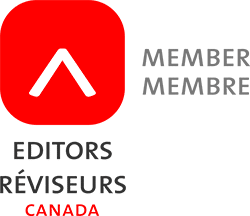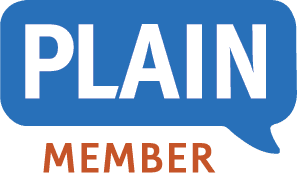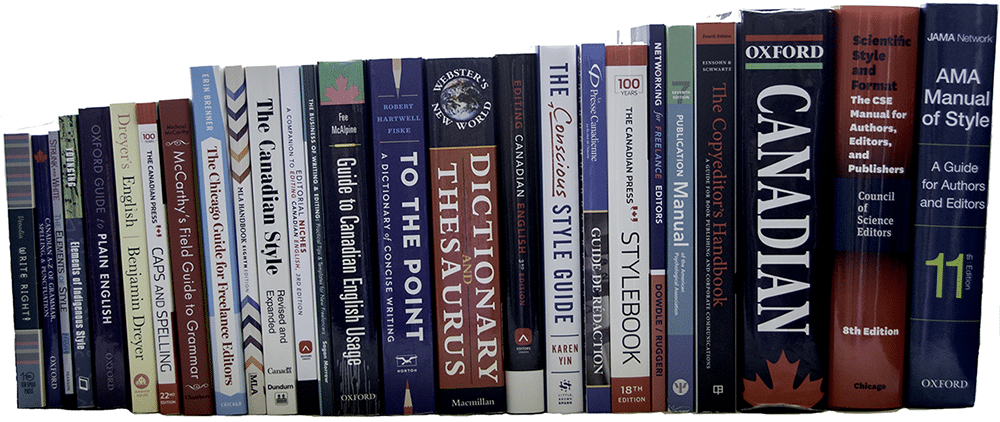I have been a professional editor since 1998 when I was promoted from a journalist and photographer to an editor at a weekly newspaper. I transitioned to magazines before getting into health research journals.
.
As an editor, I have two jobs. My first job is to help you get your message out, clearly and concisely. I’ll fix spelling, grammar and word usage problems and ensure there is consistency throughout your document. My second job is your readers’ advocate. I’ll help ensure your documents focus on what your readers want and need, ensuring they can understand your document and be able to use the information you want to share with them.
I offer different levels of editing services for web pages, newsletters, magazines, journals, supplements, conference abstracts and more.
As an active member of Editors Canada, I follow the national professional association’s standardize definitions for the services I offer. They are summarized below.
.


Plain language falls under stylistic editing.
Stylistic Editing
This type of editing clarifies the meaning, ensure coherence and flow, and refine the language. It includes:
- eliminating jargon, clichés, and euphemisms
- maintaining the language level appropriate for the intended audience, medium, and purpose
- adjusting the length and structure of sentences and paragraphs
- maintaining tone, mood, style, and authorial voice or level of formality
Also known as line editing (which may also include copy editing).
Copy Editing
This type of editing ensures correctness, accuracy, consistency, and completeness. It includes:
- correcting grammar, spelling, punctuation, and usage in text, tables and figures
- checking for consistency and continuity of mechanics and facts
- notifying designers of any unusual production requirements
- developing a style sheet or following one that is provided
- correcting or querying general information that should be checked for accuracy
Copy editing is often loosely used to include stylistic or structural editing, fact-checking, or proofreading. Editors Canada and I only use it as defined here.
Proofreading
Examining material after layout or in its final format to correct errors in textual and visual elements. The material may be read in isolation or against a previous version. Note that proofreading is checking a work after editing; it is not a substitute. It includes checking for:
- adherence to design
- minor mechanical errors (such as spelling mistakes or deviations from style sheet)
- consistency and accuracy of elements in the material (such as cross-references, running heads, captions, web page heading tags, hyperlinks, and metadata)
It may also include:
- copy fitting
- flagging or checking locations of art
- inserting page numbers or checking them against content and page references
.

AI-generated image
Web Editing
This type of editing and updating the content of web pages, including text, images, and links. It includes:
- checking links to ensure they point to the right places
- checking that link text accurately reflects where the link goes
- reorganizing or revising print copy for the web
- changing or writing web copy according to web-writing best practices
- proofreading final websites and checking for consistency on all site elements
- identifying potential copyright issues
- advising on accessibility issues
Production Editing
Often completed by a managing editor, this work includes coordinating and supervising design, formatting, and proofreading stages, and ensuring integration of design and content. It may include:
- formatting
- proofreading
- inputting changes
- locating, negotiating with, and supervising designers, artists, and printers
- creating production schedules

My bookshelf
Style Guides
I have worked with the following style guides:
- The Canadian Press Stylebook
- Publication Manual of the American Psychological Association
- AMA [American Medical Association] Manual of Style: A Guide for Authors and Editors
- Scientific Style and Format: The CSE [Conference of Science Editors] Manual for Authors, Editors and Publishers
- The Conscious Style Guide
- MLA [Modern Language Association] Handbook
- Editing Canadian English
- Elements of Indigenous Style
- The Canadian Style
If you don’t work with these style guides, I will work with the style guide of your choice. I can also create a custom style guide to suit your needs and the needs of your target audiences.
I provide stylistic, copy, and web editing services using Microsoft Word documents, Google Docs or PDFs. Proofreading can be done with PDFs or hard copies.
Email me about how my unique combination of skills can help you achieve your goals. A sample of the text may be requested to provide a quote.